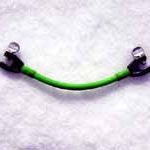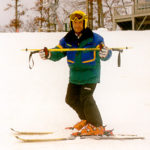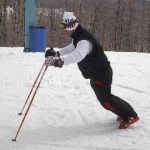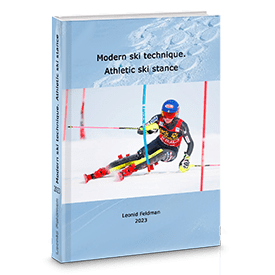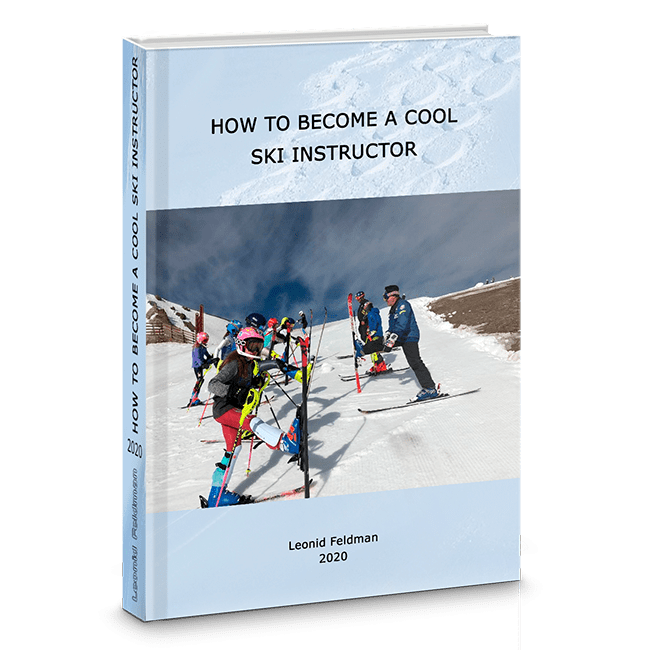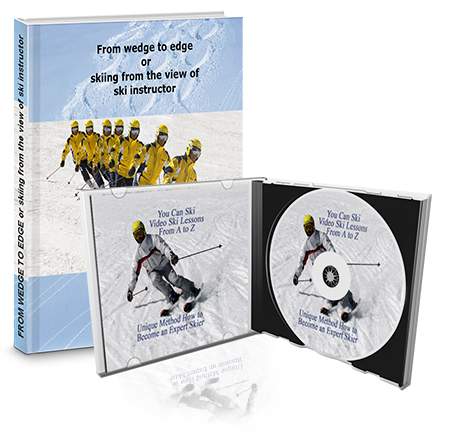Audience: Young Ski Racers
Goal: To help our young athletes become better racers
Discussion Points
Stance and Balance
Turn Initiation
Perfecting Your Racing Turn
Perfecting Your Training
The Parents’ Role in this process
In this short article I want to discuss how to help our young athletes become successful racers. I have divided this discussion into five basic segments. Stance and Balance, Turn Initiation, Perfecting Your Racing Turn, Perfecting Your Training and finally The Parents’ Role in this process. Let’s discuss each of these in order:
Stance and Balance
A proper athletic stance is essential to good balance. All athletic sports utilize the athletic stance in some form. What is a proper athletic stance?
Stand with the feet parallel and should width apart
Flex the ankle forward while slightly bending the knee with a slight tipping at the waist so that the angle of the spine mimics or is equal to the angle of the lower leg. It must be clearly understood that the ankle is a joint that can bend forward and tilt inward. When the ankle is bent forward, pressure is created on the tongue of the boot, which is immediately transferred to the front of the ski. When this happens, the tip of the ski bends as it experiences resistance from the snow.
The arms are positioned slightly forward and bent at the elbow.
This soft and flexible body position makes an athlete ready for instant reaction to any external stimulus.
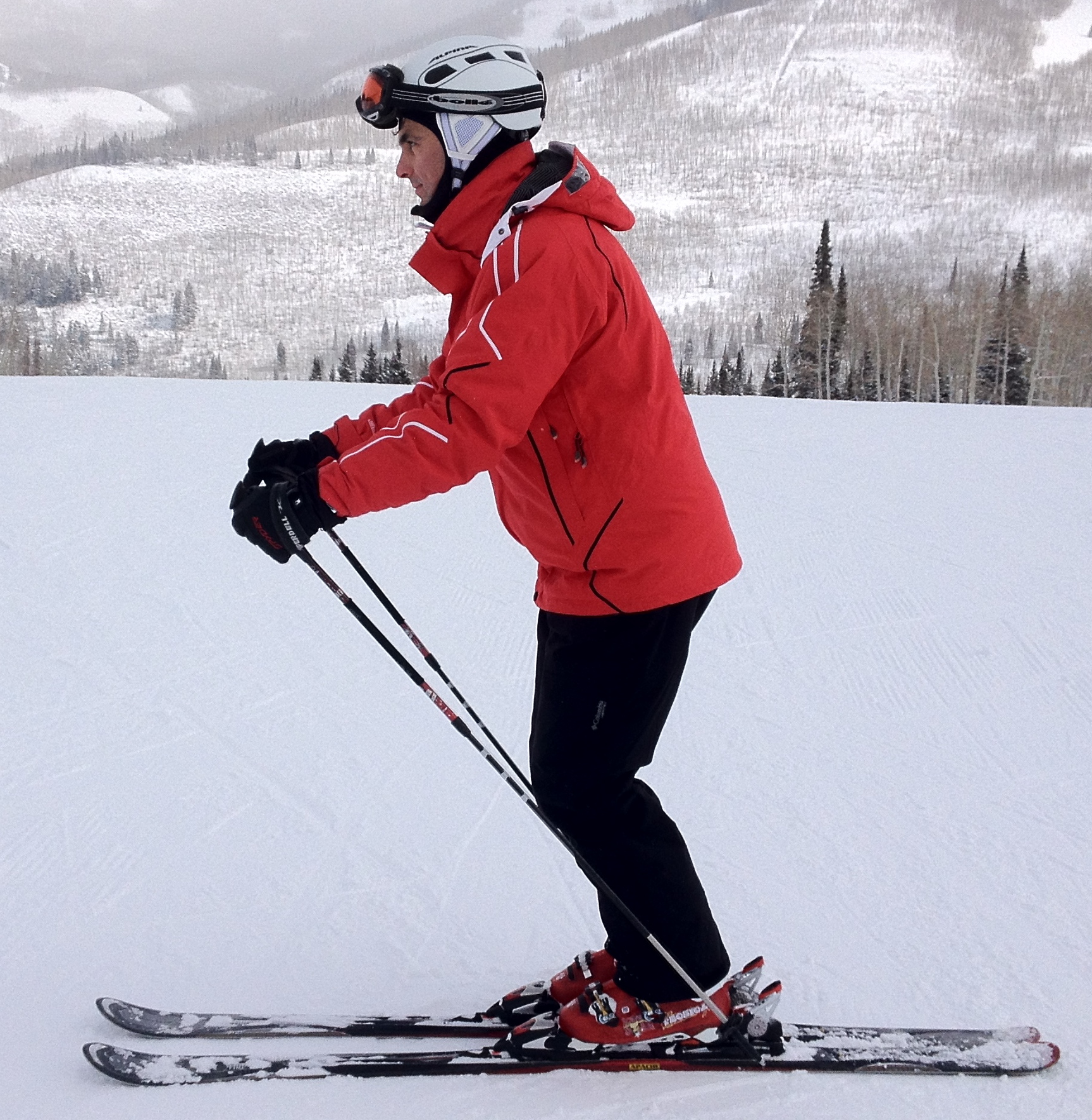
Image 1-2 Turn Initiation

Utilizing the proper stance, we can now move on to initiating a racing/dynamic turn. Two conditions are inherent to turn initiation and must be implemented to begin every turn.
The ski must be loaded. The athletic stance is how we load the ski with the correct stance. Again, you have to feel your shin bone pressing against the tongue of the boot. Your weight is transmitted through the boot with equal pressure along the entire length of the ski. The ski is now loaded.
Once the ski is loaded, it must be put on edge. Because of the parabolic shape of the ski, putting the ski on edge will result in a carved, not a skidded turn. By definition, a carved turn means that the front of the ski and tail of the ski follow the same arc. A carved turn is more controllable, faster and therefore, preferred for racing.
We use the ankle to start the carved turn. The ankle is tilted inward on the outside leg (turn right-left leg, turn left-right leg), more pressure is also applied the outside ski. We will feel the pressure being created on the inside of the ankle against the side of the boot. This movement puts the ski on the edge and the ski turns due to its shape.
As we apply pressure to the outside ski, we extend the outside leg while retracting the inside leg reducing pressure on the inside ski. These movements are “blended” together to control shape or arc of the turn.
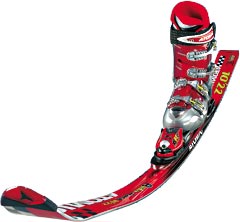
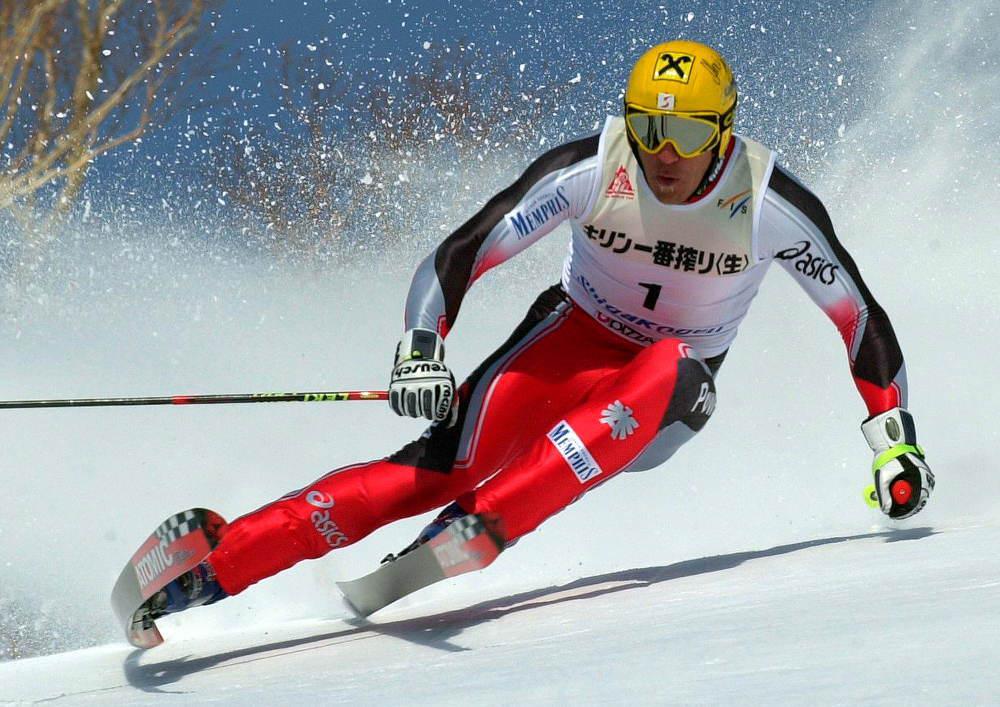
Image 3 Image 4
Perfecting Your Turn (the Dynamic Turn)
- The purpose of turning on skis is of course to change direction. All turning, including the racing turn, is made by controlling the arc of turn by adjusting the pressure on the outside ski. More pressure on the outside ski will result in a shorter radius turn, less pressure a wider turn. This pressure is applied by tipping the skis on edge and rolling the ankle inside the turn.
- All turning movements start at the feet and end at the hip. The upper body, above the hips, must remain separate and quiet as the feet, ankles and legs create and execute the turn. It is important that the athletic stance be maintained throughout the turn.
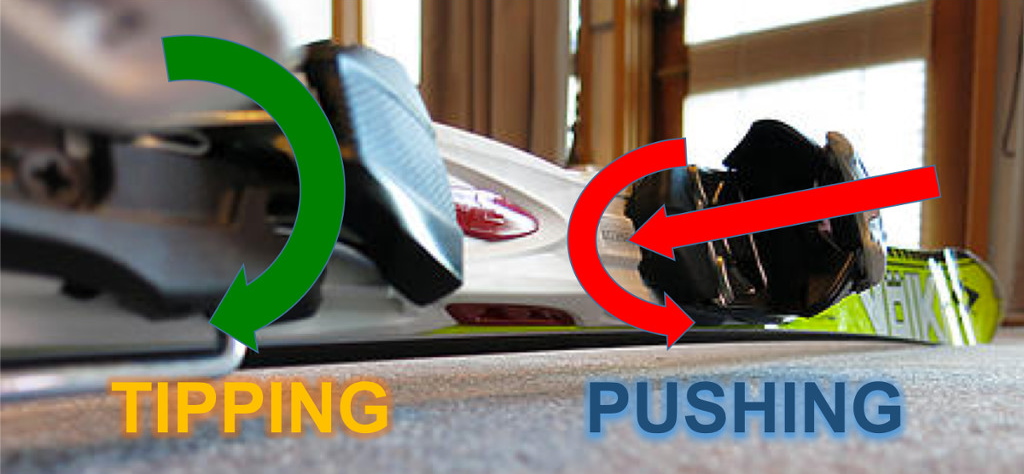
Image 5
- Most important to improving the turn and creating a more dynamic racing turn is the transition between the finish of one turn and the start of the next. For this discussion, we will use the term ‘Retraction’ to describe the movement we use to initiate the change of direction at the end of the turn prior to initiating the next turn.
- Retraction is the lifting of both skis off the snow by bending the knees. The direction change is then quickly made while the skis are in the air. Since the inside leg is already somewhat bent, the pressure on the outside ski must be released by retracting the outside ski off the snow. Both skis are now unloaded and the direction change can be easily made.
- The legs are then extended to regain contact with the snow. The leg on the outside of the new turn is extended further and with more pressure to initiate the next turn. Using retraction instead of extension to transition into the new turn is faster, more dynamic and will result in lower race times.
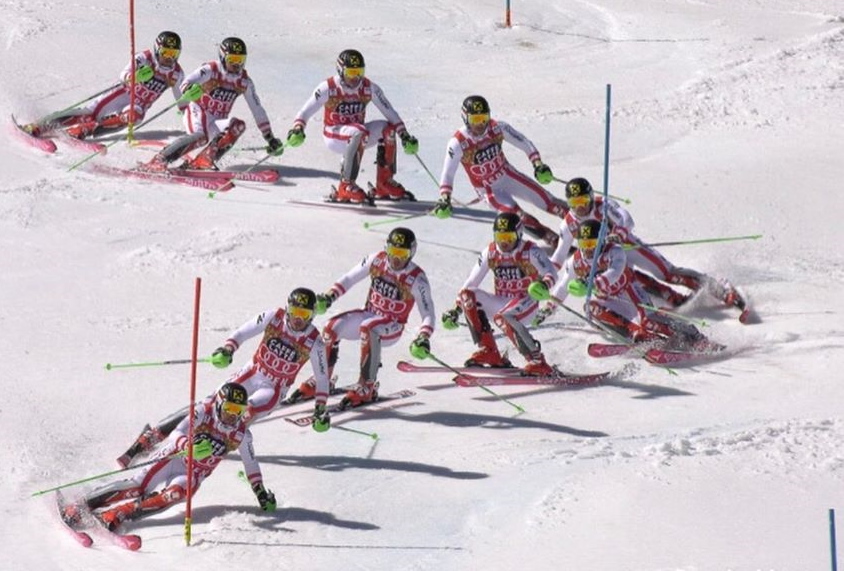
Image 6
Perfecting Your Training
Improving your racing success is completely dependent on taking your training seriously. Your coaches can provide direction, exercises and practice but you must bring the desire and work ethic. Remember – “Perfect Practice Makes Perfect Performance”
Bring a good attitude to training. Be ready to give maximum effort. Be respectful of your coaches and the other athletes.
Concentrate on your exercises and strive for perfection. Openly discuss with your coaches any problems you are having with the exercise and how to improve. Be open to your coach’s criticism and suggestions for improvement.
Discuss and understand with your coaches how the exercise will improve your racing success and podium results.
When free skiing, always apply the technical elements you are using in your training. Be consistent in your skiing. Don’t fall back into bad habits. Don’t relax coming to the finish line. The race is not over until you are well across the finish. Apply maximum effect all the way through the race.
Parents Roll
Your young athlete’s success will be helped by your support in the following ways:
Please make sure your child is prepared for training and competitions by assuring they have everything they need and are ready for the days event. A checklist is a good way to make sure nothing is forgotten – jackets, pants, skis, poles, etc. Nothing can be a bigger distraction and affect the athlete’s performance more than looking for missing gear. Distractions will always impede performance.
Make sure your athlete is ready both mentally and physically for training and competition. A well fed and well rested athlete will perform better than one who is tired or hungry.
It is my plan to explore each of these brief segments in detail by providing additional on hill explanation, demonstration, exercises, and practice. We will expand on these ideas throughout the season as we train and compete.
Finally, here are some thoughts on what it takes to become a successful racer: Concentration, focus, excitement and cold calculation! Of course, even the best racers in the world make mistakes and often fail on their way to success. But things become much easier once you have at least some idea of what works and what doesn’t. Ski racing is a high energy sport that requires strength, speed and agility and skill as well as aggressive thinking. If you don’t have intensity and aggressiveness from the moment you start, you will not be successful.
Thank you for taking the time to review this discussion. I look forward to working with each of you as the season progresses.


